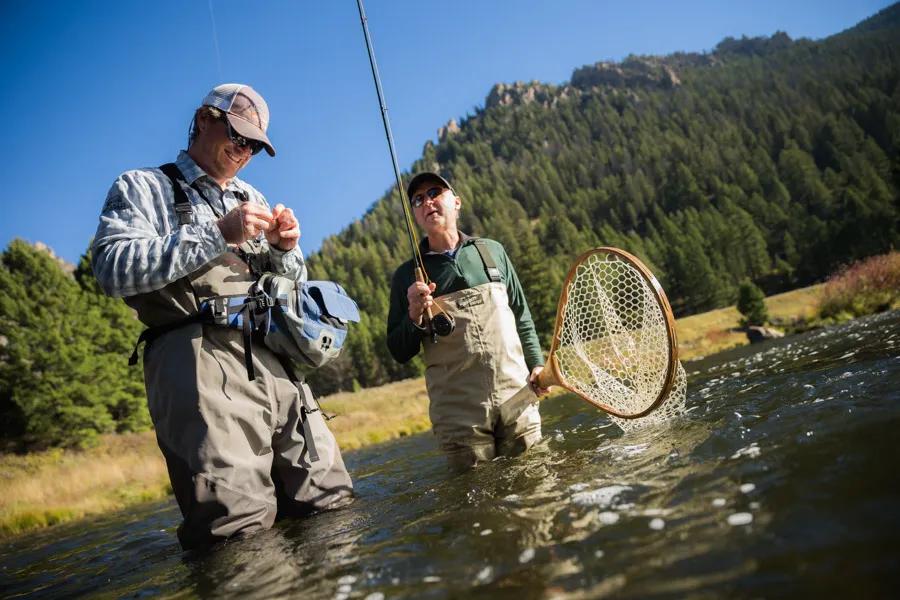
How can you fish more without going fishing more? The simple answer is to make your time on the water more efficient by avoiding knots and tangles. Let’s face the facts: knots happen and are part of the game of fly fishing, If you can’t stomach a few tangles on the water, then you shouldn't be playing this game. It doesn’t matter how proficient you are at casting, even the most experienced anglers will end up with a few tangles. On many of our guided fishing trips we recognize that the key to success is helping our guests maximizing fishing time. Knots and tangles reduce our effective fishing time, so learning a few tips and tricks to avoid ultimately puts a few more fish in the net. As guides we often have a short window of a handful of days with our guests. One of the areas we like to focus on is a few strategies that can help our guests spend less time tangled and more time fishing. This reduces frustration, increases catch rates and results in a more satisfying experience on the water.
How do knots happen?
The most common reason that leaders and tippet turn in the proverbial ‘rat’s nest’ is from missed timing on a cast. Not waiting long enough on the back cast, or accelerating too quickly on the forward cast are common creators of knots. Big changes in directions of the cast are also likely to cause knots. Usually the forward cast and back cast should be in opposite directions, but if you try to "turn" your forward cast to aggressively you can also end up in trouble.
Another common cause of knots is false casting heavy multi-fly nymph rigs. While fishing with weighted nymphs and split shot can help put our flies in the strike zone, they also add a lot of "pivot points" that can help cause tangles during a cast. Often a nymph rig will have larger weighted fly as the upper fly and a smaller fly as the dropper. Attached to the line above the flies we often add split shot for some added weight. Near the top of the leader, a strike indicator (bobber) is fixed in place. All of these pieces of tackle serve a very important purpose for catching fish. However, they create major challenges when trying to cast. The added weight, bobber, and tandem flies create a ‘boomerang’ effect as the fly through the air.
Tips for avoiding knots and tangles
Now that we’ve established that knots are most commonly formed from casting, the natural question is; ‘How do we cast better, as to avoid creating knots and tangles?’. A simple answer is to learn better casting techniques. Of course this is easier said than done and increasing our casting proficiency is a lifelong endeavor. The good news is there are some tips that are relatively easy to adopt on your next nymph fishing outing that will almost instantly help you fish more and tangle less!
Tip 1: Don’t ‘Jiggle’
Jiggling your fly line is the equivalent of banging a 1970s era television set with your fist when the reception is bad: every once in a while you fix the problem but most of the time you make it worse. Generally when you make a small casting error and your line wraps around the rod it is relatively benign. There is a human tendency to assume that if we just give the rod tip a few jiggles the flies will organically untangle themselves. Invariably the opposite happens an a small tangle explodes into a massive birds nets. Avoiding the jiggle is easier said than done and unfortunately we need to learn this the hard way. If we can just resist the urge to wiggle the rod tip most tangles are quickly solved if we freeze what we are doing and address the tangle by hand. So please, the next time you discover a knotted mess at the end of your line, don’t try to jiggle your way free.
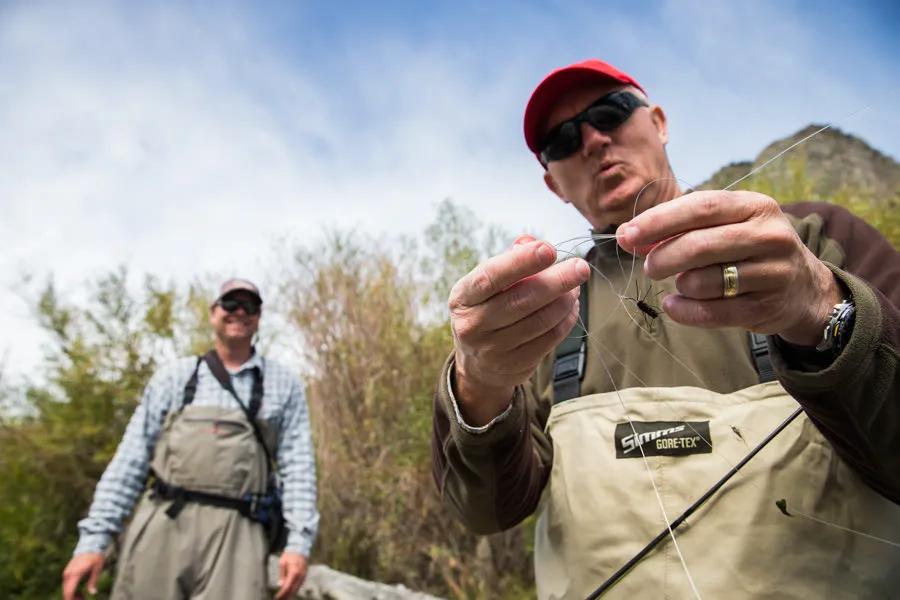
Tip 2: Cut your losses
Often, it will be two to three times as fast to cut your line and start from scratch, versus threading the line back through itself to back it out of knots. I like to find the lead fly, then clip the line near the eye of that hook. If I’m lucky, the weight fly and the dropper will slide free. If that doesn’t happen, then I go for the drop and clip it from the line. Without the extra weight of the flies, and their ability to hook the line, I try to pull the line free. Sometimes this work great. Other times, as I pull the line to free it, it tightens into a worse knot. When this happens, it’s time to ‘cut’ your losses. I’ll start trimming anything that does look like it is attached to the leader. My goal is to save as much of the leader as possible. As Kenny Rogers once sang "you need to know when to hold 'em, know when to fold 'em".
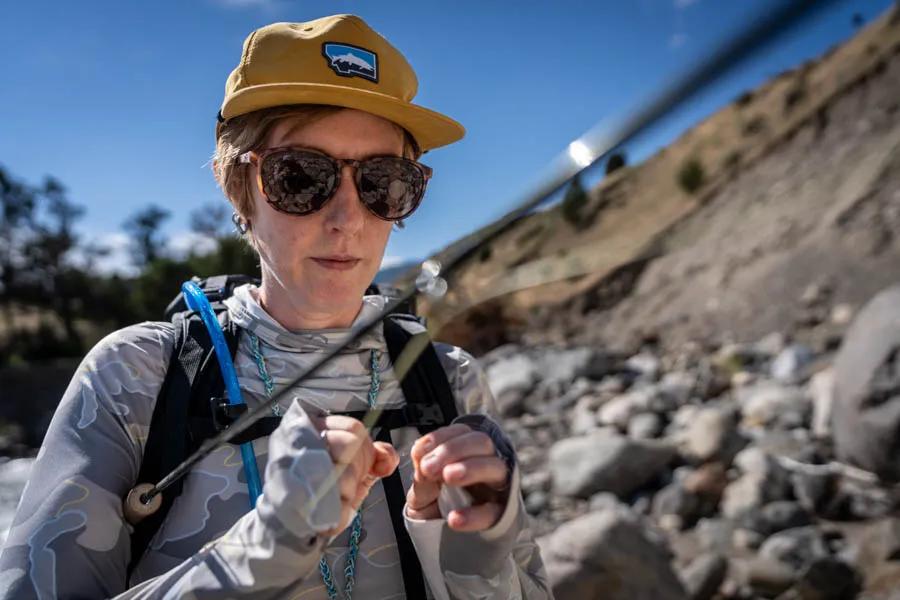
Tip 3: Keep your rod "flat" when not casting
When you bring your flies in or if you have a mild tangle avoid lifting your rod into a vertical position. When the rod is pointed up it is very easy for the flies, split shot and strike indicator to wrap around your rod. Force yourself into the habit of keeping your rod flat or at an angle when your take a break from fishing. This will allow your terminal tackle to hang below your rod in safe fashion vs. pinwheeling around the rod when you point it up.
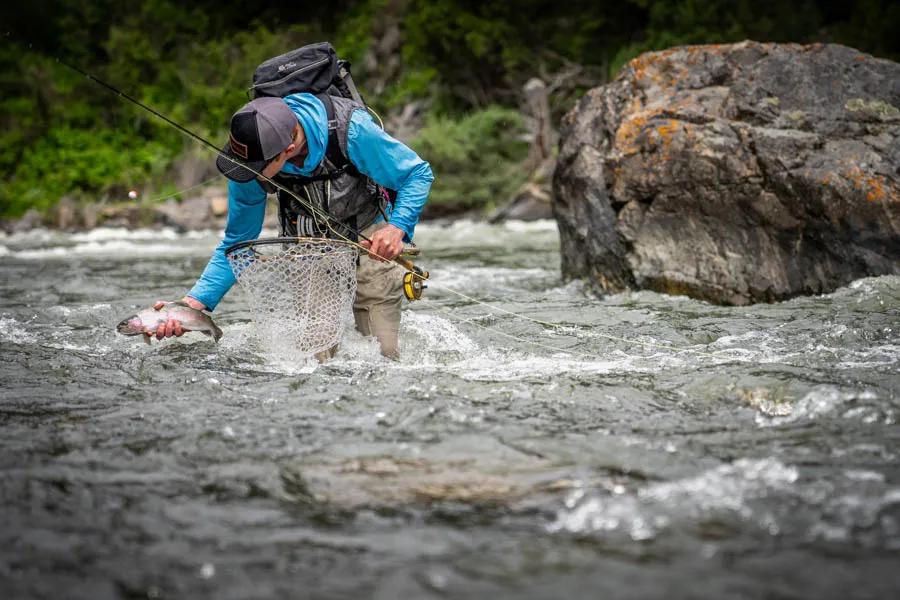
Tip 4: Open up your casting stroke
The geometry of your casting rhythm should change when you are fishing multi-fly nymph rigs. Most fly casting instructional books and videos will advocate alternating the rod from the positions of "10 and 2" between forward cast and back cast. When we are fishing dry flies this results in a tight loop and an efficient cast. Tight loops can be a problem with multi fly weighted nymph rigs. By dropping our forward cast a little lower to 10:30 and our back cast to 2:30 (on the imaginary clock) we allow the loop of the fly line to open up a bit more. Rarely are we casting long distances with nymph rigs. While open loops are not as efficient as a tight loop, they result in far fewer tangles when nymph fishing.
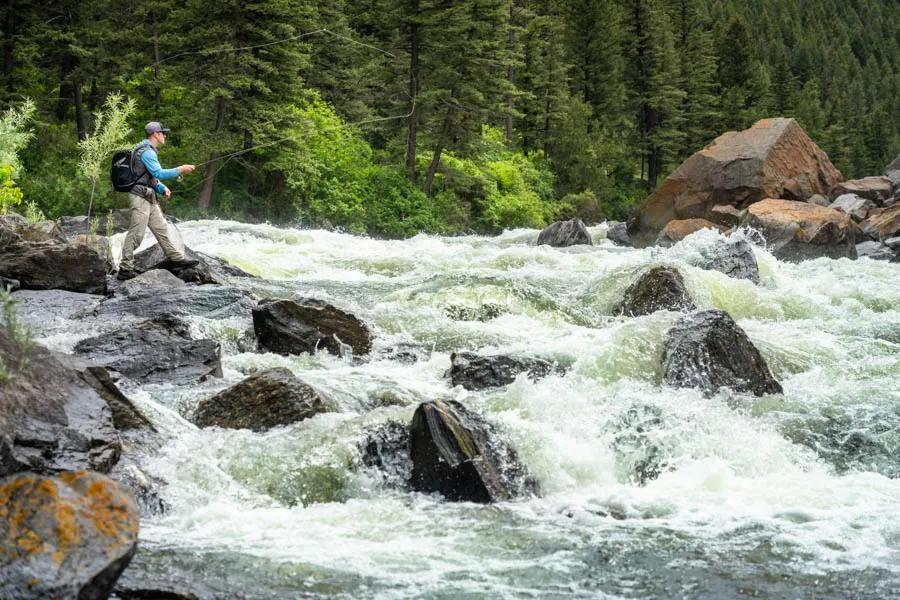
Tip 5: Let the water load your rod
Any time your timing falls off in the casting stroke you are at a risk of tangling. Usually this occurs when we rush the forward cast before the back cast has fully extended. When the rod begins to advance into the forward cast before the back cast has full straightened it causes a whiplash effect and bad things happen. One easy solution is to simply let your back cast drop all the way to the water behind you when float fishing or wading mid river. There are several advantages to this trick: it ensures that your not rushing the forward cast AND it allows the water to add extra resistance to the rod which effectively loads the rod for the forward cast. Patience is your friend when casting heavy nymphing rigs and using a "water loading" technique on the back cast forces patience in your cast.
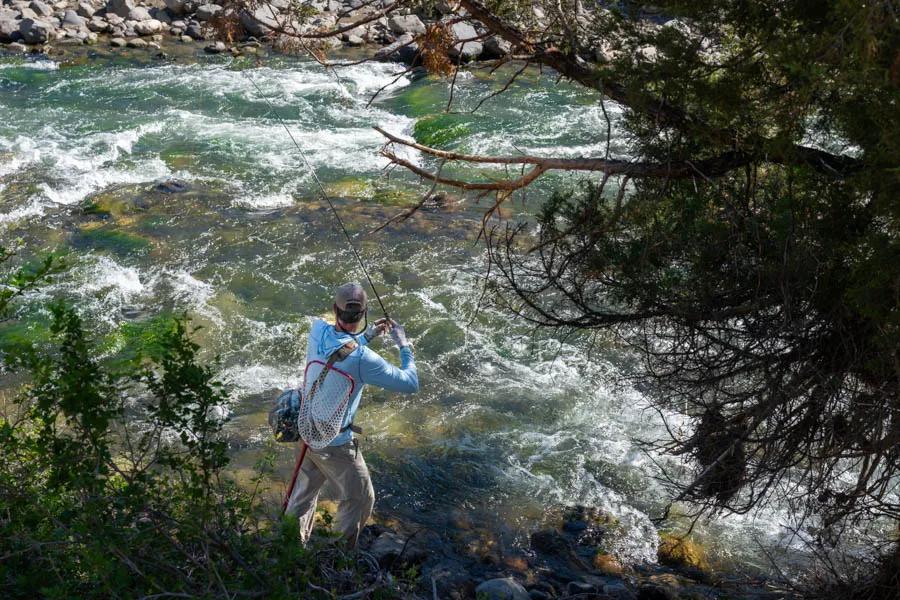
Summary
Trout eat 90% of their meals below the surface and nymph fishing is an extremely effective way to target trout most days on the water. Unfortunately the numerous flies, weights and strike indicator on a typical nymphing rig put us at a higher risk of tangling. By modified our casting stroke and incorporating a few "tangle avoidance" strategies we can dramatically increase our effective time on the water. You can't catch trout when your sitting on the bench!
